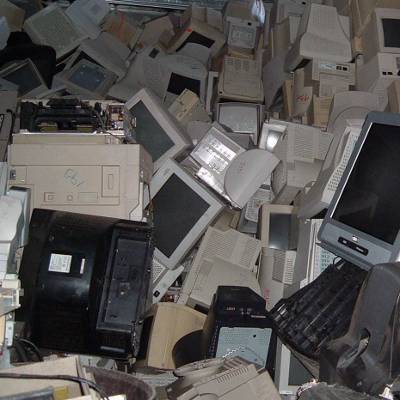SMART Blog
Mountains of Old Monitors are Creating an Ecological Disaster!
 Remember when you upgraded to a flat screen TV or monitor just a few years ago? You may have marveled at the increased picture quality and celebrated getting rid of your old and bulky equipment, but do you know what happened to the old CRT monitor after you threw it out? Unfortunately, the answer doesn't bode well for the environment.
Remember when you upgraded to a flat screen TV or monitor just a few years ago? You may have marveled at the increased picture quality and celebrated getting rid of your old and bulky equipment, but do you know what happened to the old CRT monitor after you threw it out? Unfortunately, the answer doesn't bode well for the environment.
Now you may be saying, "Hang on a second, the whole reason I upgraded from CRT monitors to flat screens is because someone told me that it was good for the environment!" This remains to be a true selling point. In fact, LCD monitors consume significantly less power than CRT monitors, saving the average user up to $27 per year on one's electric bill. However, what we're seeing is that the negative environmental impact from old CRT monitors isn't coming from energy consumption, but rather, it's coming from the mountains of discarded monitors that are piling up all over the world, polluting the environment with toxic chemicals.
The main toxin to be concerned about is lead. The glass used in old CRT monitors is made out of lead, and we're not talking about a small amount of lead either. On the contrary, what makes a CRT monitor so heavy is that behind the glass screen is a large tube made out of lead-infused glass. Currently, there's a demand to recycle certain monitor components like copper wiring and circuit boards, but no such demand exists to make the recycling of lead glass worthwhile. This is why waste disposal companies have special handling procedures in place when it comes to throwing out old CRT monitors.
Back in the day when CRT monitors were new and driven right off the lot, there was a high enough demand to recycle lead glass that it was a profitable venture for recycling companies to take it on. This all changed when new flat screen monitors were introduced, became affordable, and everybody made the switch. As reported by Wired, "Ten years ago, Videocon was paying recyclers between $100 and $200 a ton for their leaded glass,' says Jeff Hunts, a manager with CalRecycle. 'Today, recyclers have to pay Videocon $100 to $200 per ton just to take the glass away."
This decrease in demand for recycling lead glass has turned into an ecological nightmare for communities that have monitor mountains of their own. These piles of thrown out monitors are getting bigger and there's nowhere to go with all the waste. Consequently, many recycling companies that once collected CRT monitors with the intent of selling the lead glass for profit are now abandoning their collections, leaving it up to the local municipalities to sort out their mess. The recycling trade publication Resource Recycling reported on the size of just a few of these abandoned piles of trashed monitors across the United States:
- Cincinnati, Ohio: 1,500 tons.
- Denver, Colorado: 8,000 tons.
- Halsted, Pennsylvania and Vestal, New York: 10,000 tons.
- Baltimore, Maryland: 3,000 full "gaylord" boxes.
Many more of these sites exist around the United States and around the world. In California alone 100 million pounds of leaded CRT monitor glass is recovered each year. The danger that comes from unattended piles of old monitors is that they will deteriorate and their toxic chemicals will leak into the environment. Lead from the glass will then make its way to the water supply and cause organ damage when ingested by humans, among other harmful effects.
Unfortunately, in a situation like this you can't retrieve your old monitors from the landfill and get a do over. You've likely moved on from CRT monitors and you're enjoying the benefits of your new LCD monitors, all while hopefully not drinking polluted tap water. The takeaway from this ecological crisis is for all of us to be environmentally conscious when making technology purchases.
It's worth it to research the products you plan on buying, keeping its end-of-life plan in mind. To find out the true environmental impact of your technology, and to have assistance implementing a green technology strategy for your office that will reduce your company's carbon footprint, give SMART Services a call at 586 258-0650 .




Comments